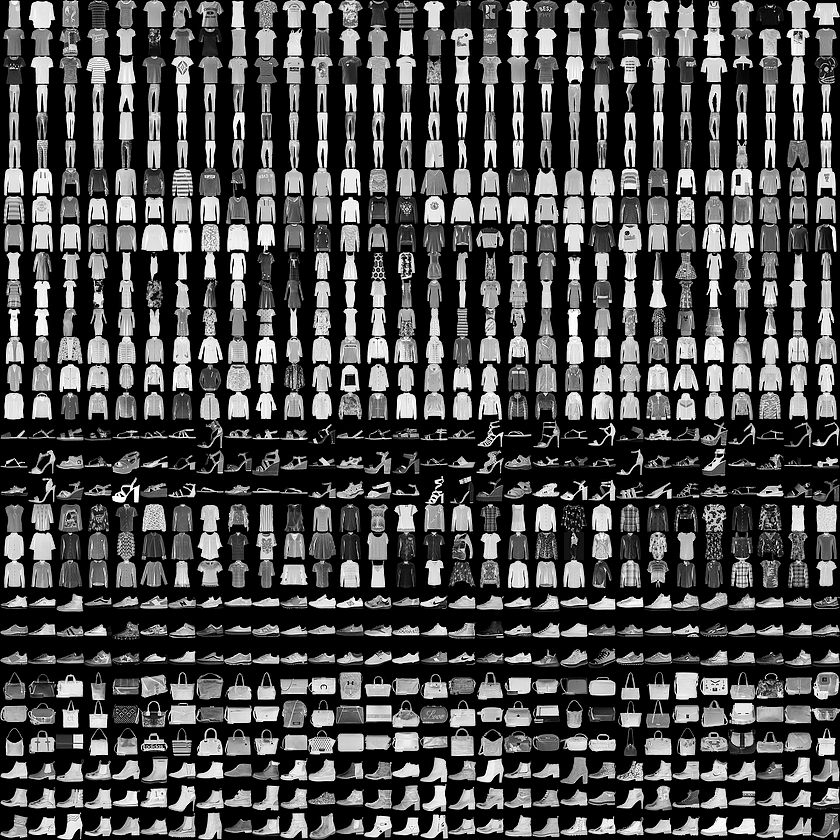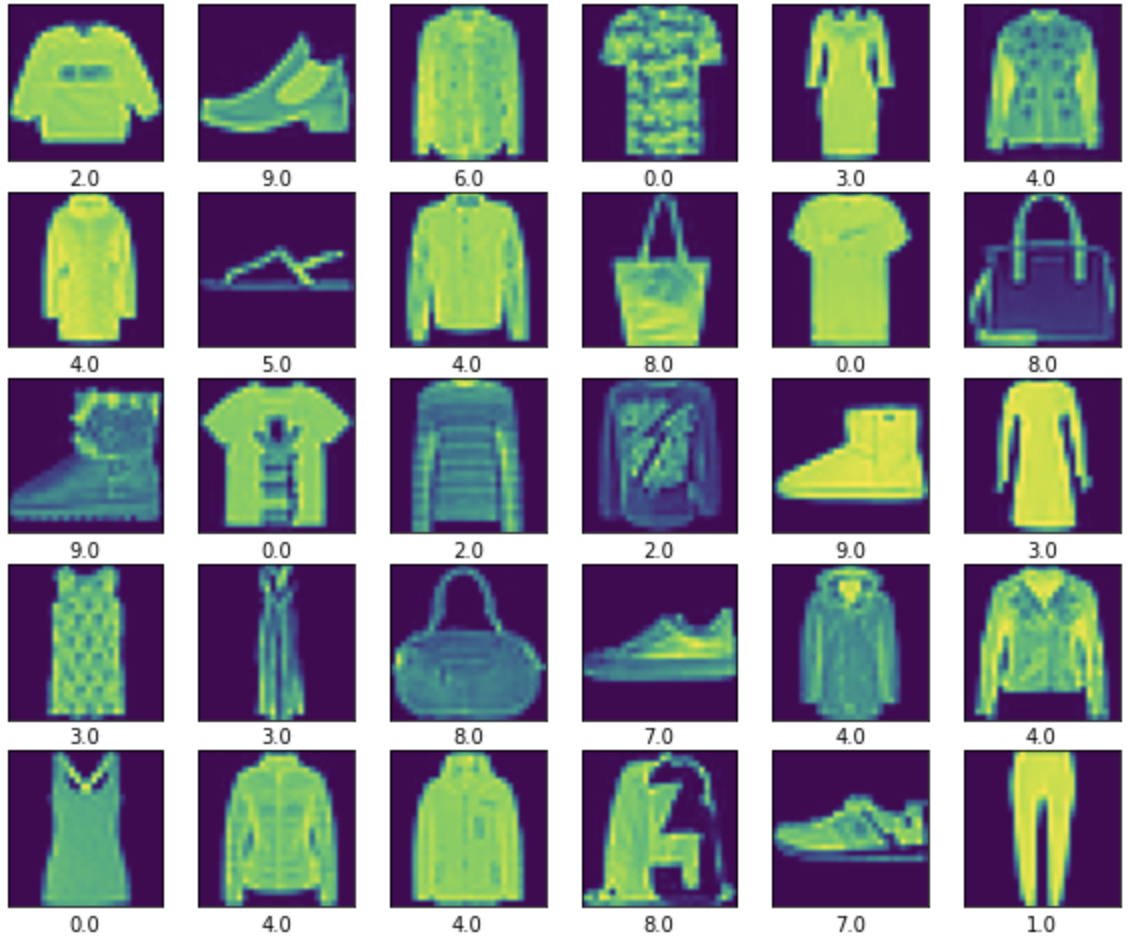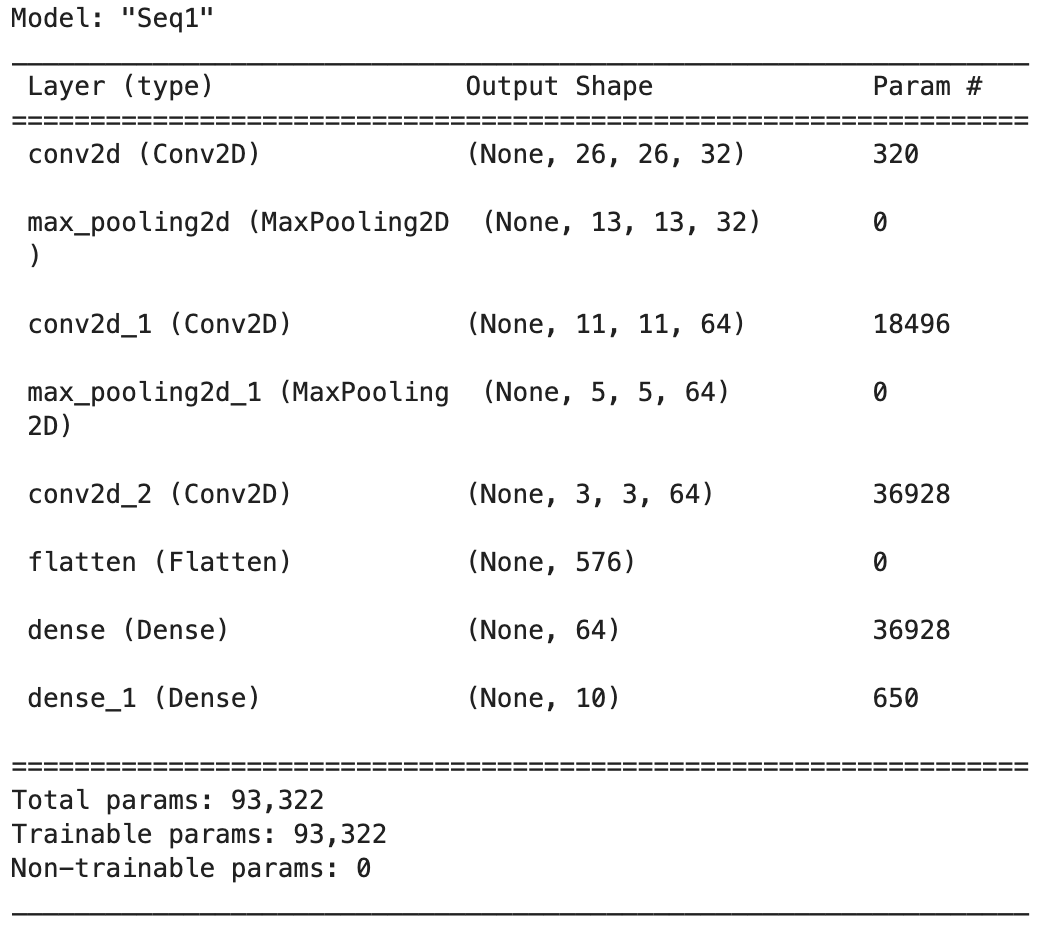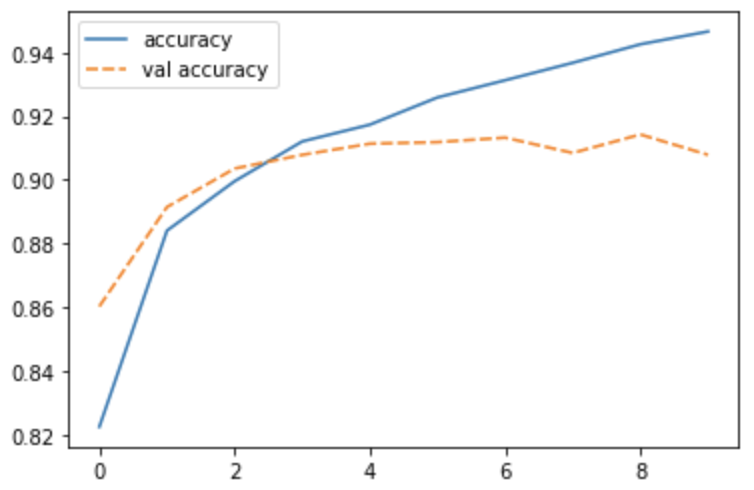Keras(一)Sequential模型及实践
本文介绍tf.Keras中最常用的模型结构Sequential模型,并分享一个Sequential模型实例
Sequential 模型
Sequential模型是Keras中最常用的模型,是一个线性、顺序的模型。
特点是模型的每一层都拥有一个唯一的输入tensor和输出tensor。
构建一个Sequential模型有以下两种写法:
# Define Sequential model with 3 layers
model = keras.Sequential(
[
layers.Dense(2, activation="relu", name="layer1"),
layers.Dense(3, activation="relu", name="layer2"),
layers.Dense(4, name="layer3"),
]
)
# Call model on a test input
x = tf.ones((3, 3))
y = model(x)
# Create 3 layers
layer1 = layers.Dense(2, activation="relu", name="layer1")
layer2 = layers.Dense(3, activation="relu", name="layer2")
layer3 = layers.Dense(4, name="layer3")
# Call layers on a test input
x = tf.ones((3, 3))
y = layer3(layer2(layer1(x)))
Dense
tf.keras.layers.Dense创建一个全连接层,以下是参数:
tf.keras.layers.Dense(
units, # 正整数,输出空间的维数
activation=None, # 激活函数,不指定则没有
use_bias=True, # 布尔值,是否使用偏移向量
kernel_initializer='glorot_uniform', # 核权重矩阵的初始值设定项
bias_initializer='zeros', # 偏差向量的初始值设定项
kernel_regularizer=None, # 正则化函数应用于核权矩阵
bias_regularizer=None, # 应用于偏差向量的正则化函数
activity_regularizer=None, # Regularizer function applied to the output of the layer (its "activation")
kernel_constraint=None, # Constraint function applied to the kernel weights matrix.
bias_constraint=None, **kwargs # Constraint function applied to the bias vector
)
全连接层在整个网络卷积神经网络中起到“特征提取器”的作用。如果说卷积层、池化层和激活函数等操作是将原始数据映射到隐层特征空间的话,全连接层则起到将学到的特征表示映射到样本的标记空间的作用。
卷积网络在形式上有一点点像咱们正在召开的“人民代表大会”。卷积核的个数相当于候选人,图像中不同的特征会激活不同的“候选人”(卷积核)。池化层(仅指最大池化)起着类似于“合票”的作用,不同特征在对不同的“候选人”有着各自的喜好。
全连接相当于是“代表普选”。所有被各个区域选出的代表,对最终结果进行“投票”,全连接保证了receiptive field 是整个图像,既图像中各个部分(所谓所有代表),都有对最终结果影响的权利。
实例
本文介绍一个用Sequential CNN做图像分类的实例,数据来源于: https://github.com/zalandoresearch/fashion-mnist
分类图像中的衣物。

本文所提供的数据集是csv格式的,包含测试集和数据集,打印出head():

文件读入和预处理(将2维reshape成3维):
# import files
data_train_file = "./Datasets/fashion-mnist_train.csv"
data_test_file = "./Datasets/fashion-mnist_test.csv"
# read files csv
df_train = pd.read_csv(data_train_file)
df_test = pd.read_csv(data_test_file)
# data as array in order to reshape them
train_data = np.array(df_train, dtype='float32')
test_data = np.array(df_test, dtype='float32')
# Normalize pixel values
X_train = train_data[:,1:]/255.0
y_train = train_data[:,0]
X_test = test_data[:,1:]/255.0
y_test = test_data[:,0]
print("X_train shape", X_train.shape)
print("y_train shape", y_train.shape)
print("X_test shape", X_test.shape)
print("y_test shape", y_test.shape)
# reshape
X_train_reshaped = X_train.reshape(X_train.shape[0],*(28,28,1))
X_test_reshaped = X_test.reshape(X_test.shape[0],*(28,28,1))
print(f'x_test shape: {X_train_reshaped.shape}')
X_train shape (60000, 784)
y_train shape (60000,)
X_test shape (10000, 784)
y_test shape (10000,)
x_test shape: (60000, 28, 28, 1)
预览一下转换后的图片
import matplotlib.pyplot as plt
plt.figure(figsize = (10,10))
for i in range(30):
plt.subplot(6,6,i+1)
plt.xticks([])
plt.yticks([])
plt.grid(False)
plt.imshow(X_train_reshaped[i])
plt.xlabel(y_train[i])
plt.show()

模型:
model = keras.Sequential([
layers.Conv2D(32,(3,3), activation = 'relu', input_shape = (28,28,1)),
layers.MaxPooling2D((2,2)),
layers.Conv2D(64,(3,3), activation = 'relu'),
layers.MaxPooling2D((2,2)),
layers.Conv2D(64,(3,3), activation = 'relu'),
layers.Flatten(),
layers.Dense(64, activation = 'relu'),
layers.Dense(10)
], name='Seq1')
model.summary()

plot模型
tf.keras.utils.plot_model(model, show_shapes=True)

保存模型
model.save('Sequential-01')
构建和训练
model.compile(optimizer = 'adam', loss = tf.keras.losses.SparseCategoricalCrossentropy(from_logits=True), metrics = ['accuracy'])
history = model.fit(X_train_reshaped, y_train, epochs=10, validation_data=(X_test_reshaped, y_test))
打印准确率
import seaborn as sns
acc = {'accuracy': history.history['accuracy'],
'val accuracy': history.history['val_accuracy']}
sns.lineplot(data=acc)

介绍下本模型用到的,也是CNN中常见的概念
Conv2D
tf.keras.layers.Conv2D是keras中2D的卷积层,一般用于图像。
Flatten
将输入扁平化,将n维的tensor投影到1维,也是模型从高维的数据变行到输出的标签的常用工具。
池化
池化(Pooling)是卷积神经网络中另一个重要的概念,它实际上是一种形式的降采样。
Keras中提供平均池化(AveragePool)和最大池化(MaxPool)
最大池化将输入的图像划分为若干个矩形区域,对每个子区域输出最大值。
平均池化则输出其平均值。
池化的作用:减小输出大小 和 降低过拟合。降低过拟合是减小输出大小的结果,它同样也减少了后续层中的参数的数量。


 浙公网安备 33010602011771号
浙公网安备 33010602011771号